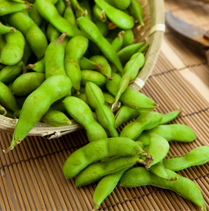
Here are a few tips to assist a parent in meal/snack planning and food selection.
Unpredictable and unusual eating behavior is very common among preschool children aged two to five years. Often at meal and snack time, there is a frequent struggle for control between parents and preschoolers of what to eat, how much to eat, and even when to eat. Children have different physical and emotional needs than adults. Recognizing these differences can help minimize tensions centered on food and make mealtime more pleasant. Take a deep breathe when patience is running low and smile to help ease any tension growing between you and your child.
Nutrition Tips for Meal and Snack Planning
- Children require smaller portions than adults. About one tablespoon of each type of food for every year of a child’s age is an ample portion size
in most cases. - Young children need to snack throughout the day in addition to regularly scheduled meals. Keep the snacks small and provide water instead of juice or milk so your preschooler will be hungry at mealtime.
- All children over the age of two are advised to follow the same low fat, low saturated fat, and low cholesterol diet as an adult. This is less than 30% fat, less than 10% saturated fat, and less than 300mg of cholesterol daily. This does not mean you need to eliminate all high-fat foods from your
child’s diet. - Choose lower fat foods more often and when choosing high-fat foods aim for the child size portions of healthy fats like avocado, nuts
or olives. - Give preschoolers time to try new foods and recipes. If your child does not like them right away, try them several times over the course of several months before giving up. It can take a child more than a dozen times to enjoy new tastes.
- A food may not be appealing due to its natural form or because of the way, it is presented. Often, raw, crunchy vegetables are preferred over hot ones or finger foods are more desirable than those needing utensils.
- Remember, children have their own internal signals for hunger, satiety, and nutrient needs that guide them in making appropriate decisions about food. Forcing preschoolers to try every food or clean their plates is not helpful and may be harmful to a child’s future relationship with food.
- Try to provide balanced, varied and tasty meals and snacks. Offer foods from all the food groups: whole grains such as whole wheat bread, whole grain pasta, and whole grain cereals. Offer 5 -9 servings of fruits and vegetables daily, lower fat and nonfat milk products; lean trimmed meats and skinless poultry, fish, dried peas, beans, and nuts.
Healthy snacks include:
- Dairy: yogurt (low fat or nonfat, preferably lower in sugar) or string cheese (part skim milk)
- Dry Cereal (whole grain, low in sugar) or crackers (whole grain, low fat)
- Plain mini bagels or whole grain bread or spread with jam, low-fat cream cheese, or peanut butter
- Homemade smoothies made with 100% whole fruit mixed with water, 1% or nonfat milk and low-fat yogurt
- Fruit, raisins, dried apricots
- Graham crackers, whole grain fig bars, vanilla wafers, animal crackers, pretzels
- Plain popcorn or sprinkled with some parmesan
- Spelt or corn Tortillas with low fat cheese or peanut butter
- Mini carrots or cut raw vegetables and low-fat dip
- Mini pizzas made with whole grain English muffins or pita bread, tomato sauce, and part skim mozzarella cheese












